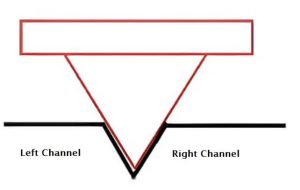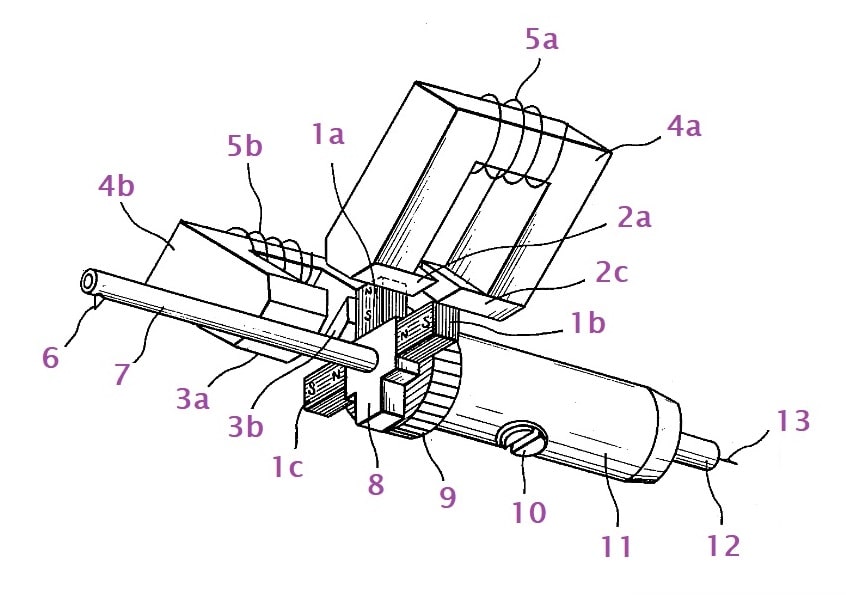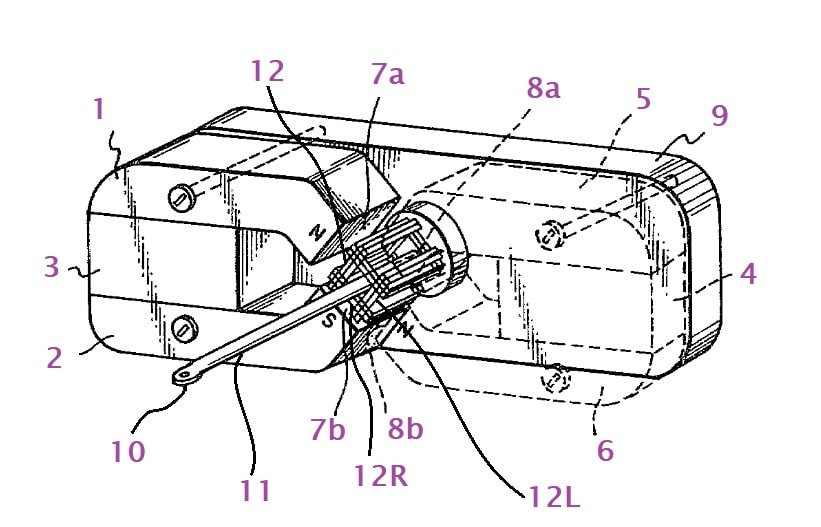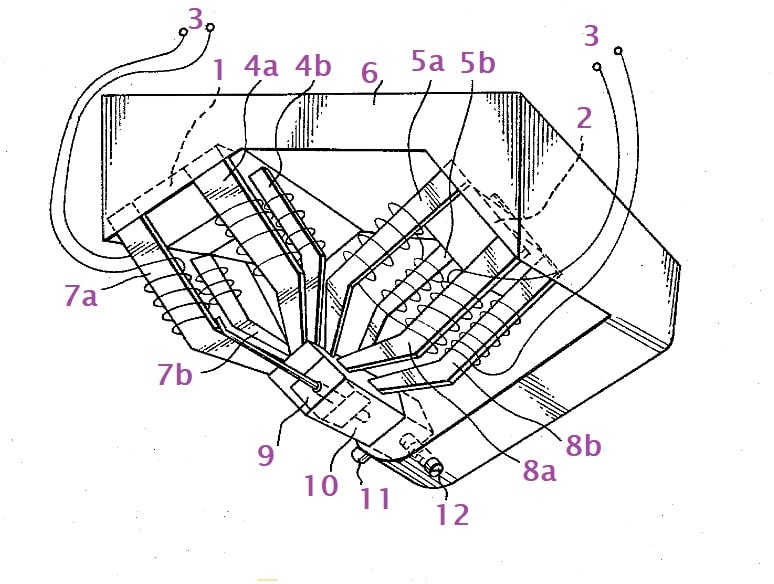A turntable phono cartridge is the most important component of a turntable without which you can’t listen to your vinyl.
Despite being such an important component, I haven’t seen many articles that explain the cartridge working concept in detail and most of the sites are only covering moving magnets and moving coil cartridges while there are 3 more cartridges that you should know about.
So, to make you understand the phono cartridges concept properly, we have drafted this simple and beginner’s friendly article in which we have explained turntable cartridges, how these cartridges work, how electric signals are generated by cartridges and what are the different types of turntable cartridges in the market and also, explained the design and engineering of each with their diagram.
So, let’s start with the first question.
What is a Turntable Phono Cartridge?
A turntable phono cartridge is a component of the turntable that converts the vibrations (sent by stylus while running into the grooves of the record) into electrical signals or audio signals.
These audio signals are then transmitted further to the phono preamp, amplifier, and speakers.
In technical language, a turntable cartridge is an electromechanical transducer that helps in playing vinyl records on turntable or record players.
So now, you know about a cartridge and its role in the turntable but do you know how the magic (vibrations to electric signals conversion) happens inside a cartridge i.e. how electric signals are generated?
Let’s discuss the actual working concept of the cartridges.
How Does Cartridges Work or Generate Electric Current?
All the cartridges have 3 different components:
- Stylus or needle
- Cantilever (With stylus at one end and magnet or coil at the other end)
- Any one of these: magnets & coils, magnets, coils & iron or ceramic element.
These 3 components work together to generate the electric signals.
If we talk about the scientific concept then the electromagnetic law of physics is applied here which is known as Faraday’s law.
But, I won’t make you understand this law instead I will explain the working concept of the cartridges in a way through which you can understand the concept a lot easier.
In simple words, the record grooves are V-shaped and when we place a needle or styli in it then you can see that there is a left section and a right section inside the groove for the styli.
These sections are called channels i.e. right channel and left channel. The right channel is the one that is closest to the edge of the record and the left channel is the one that is closest to the inner section of the record.
These channels have an audio signal and when the stylus runs on the records, it fetches these audio signals in the form of vibrations, and then, these vibrations are sent to the cartridge through the cantilever.
At the end of the cantilever, there can be a magnet, a coil, or a small piece of iron that vibrates as the stylus vibrates and the cartridge catches these vibrations and turns them into electric signals.
Confused? Let me explain this better with the help of an example.
Suppose, the cartridge is a small empty box where the cantilever (attached to one side) hangs between the center of the box. The side of the box has either magnets or wired coils.
When the cantilever vibrates, the magnet or coil at the end of the cantilever vibrates too. The magnets or wire coils on the side of the cartridge’s body catch these vibrations and convert them into electric signals.
So basically, we can say that the cartridge converts one form of energy into another form i.e. vibrations to electric signals.
Now, it is important to know that the signals generated by cartridges are at the pre-amplified stage or we can say at the phono level which requires amplification of signals to line level and application of RIAA equalization curve in reverse.
If you don’t know about the RIAA equalization curve then I suggest you check out this article about phono preamp and its role.
So here, the role of the phono preamp comes into the picture and it amplifies phono-level signals to line-level signals accepted by amplifiers or stereo receivers.
After that, a powered amplifier or stereo receiver amplifies these signals to an extent that makes them hearable on the speakers.
Also, note that only the cantilever moves inside the cartridge which means the magnets or coils inside the cartridge will remain stationary.
There is one more thing that you must remember getting a good quality cartridge is not enough to get perfect sound quality, you should also drive your focus on the perfect adjustment of other major components like the tonearm must be balanced, tracking force and anti-skating must be adjusted, the cartridge must be aligned and the grounding of turntable must be perfect.
The optimum adjustments of these components are required to get the perfect sound quality from your turntable setup.
If you didn’t configure your turntable setup properly then get ready to face problems like distorted sound, record skips, etc.
So, this is how a turntable phono cartridge works. Now, let’s discuss the types of turntable cartridges.
Types of Turntable Cartridges:
- Moving Magnet Cartridges
- Moving Coil Cartridges
- Moving Iron Cartridges
- Moving Micro Cross Cartridges
- Ceramic Cartridges
Moving Magnet Cartridges (MMC):
In moving magnet cartridges, there are stationary wired coils inside the body and a tiny magnet is placed at the end of the cantilever in a way that magnets lie between the wired coils inside the body.
So, when the stylus runs on the record grooves, it vibrates and so do the tiny permanent magnets attached at the end of the cantilever which induces a small current in the wired coils. [Source]
Diagram:
You can understand the different parts and engineering of moving magnet cartridges from the diagram shared below:
1) 1a, 1b, and 1c are the movable magnets attached at the end of the cantilever.
2, 3) 2a, 2c, and 3a, 3b are the poles that are engaged between movable magnets and the vibration system.
4) 4a is a yoke for the right-hand channel and 4b the left-hand channel. These yokes are made from in addition to ferrite material, high magnetic-permeability material such as bent and worked permalloy or the like.
5) 5a is the coil for the right channel and 5b is the coil for the left channel.
6) Stylus
7) Cantilever
8) Moving magnet holder
9) Damper
10) Mounting Screw
11) Cylindrical Support Body
12) Support Pipe
13) Suspension Wire
Moving Coil Cartridges (MCC):
In moving coil cartridges, there are permanent magnets inside the cartridge body and coils are wired at the end of the cantilever in a way that coils lie between the permanent magnets inside the body.
So, when the stylus runs on the record grooves, it vibrates and so do the wired coils attached at the end of the cantilever which induces a small current in the cartridge. [Source]
Diagram:
You can understand the different parts and engineering of moving coil cartridges from the diagram shared below:
1, 2) Yokes that are bar-shaped but bent at one end.
3, 4) Permanent Magnets
5, 6) Yokes that are bar-shaped but bent at one end.
7) 7a and 7b are the end of point 1,2 yokes that are disposed to mutually define an angle of 90°. These 7a is magnetized to be N-pole and 7b is magnetized to be S-pole.
8) 8a and 8b are the end of point 5,6 yokes that are disposed to mutually define an angle of 90°. These 8a is magnetized to be S-pole and 8b is magnetized to be N-pole.
9) Non-magnetic material
10) Stylus
11) Cantilever
12) Coil fixed at the end of the cantilever. The 12L is for left channel reproduction and 12R is for right channel reproduction.
These are the two cartridges that are mostly used in turntable setups and people usually get confused between these two and often ask which outputs better sound quality.
So, If you are having this question too then I suggest you read this article to learn the difference between MM and MC cartridges.
Moving Iron Cartridges (MIC):
The moving iron cartridges are considered as moving magnets cartridges by many people in the vinyl community but MIC’s engineering and working principle is very different from MMC cartridges.
In moving iron cartridges, the permanent magnets and wired coils are attached inside the body and a small piece of iron is attached at the end of the cantilever.
Well, the working principle is similar to MMC and MCC i.e. the iron vibrates between wired coils and permanent magnets which induces a tiny current but the engineering of the cartridge is very different.
There are two permanent magnets attached to the mounting base and both magnets have 4 arms i.e. yokes and the coils are wired on these yokes. So, the iron at the cantilever’s end vibrates these 4 arms and induces a small current in the cartridge. [Source]
Diagram:
You can understand the different parts and engineering of moving coil cartridges from the diagram shared below:
1, 2) Permanent magnets
3) Coils wired around the yokes connected to permanent magnets.
4) 4a and 4b are the yokes attached to the one end of the permanent magnets (1).
5) 5a and 5b are the yokes attached to the one end of the permanent magnets (2).
6) Mounting Base
7) 7a and 7b are the yokes attached to the other end of the permanent magnets (1).
8) 8a and 8b are the yokes attached to the other end of the permanent magnets (2).
9) Damper
10) Damper Case
11, 12) Screws
Moving Micro Cross Cartridges (MMCC):
The moving micro cross cartridge was invented by Bang & Olufsen which has a slight variation in the design and engineering if compared with moving iron cartridges.
Just like MIC, in MMCC, there are two permanent magnets attached to the mounting base and both magnets have 4 arms i.e. yokes, and the coils are wired on these yokes.
But instead of iron, a micro cross is attached at the end of the cantilever which vibrates when the stylus vibrates and induces a small current in the cartridge.
Ceramic Cartridges:
In ceramic cartridges, a tiny electric current is created using the piezoelectric effect. Unlike MMC, MCC, MIC, and MMCC, understanding the engineering of ceramic cartridges is very easy.
Diagram:
You can understand the engineering of ceramic cartridges with the help of the diagram shared below:
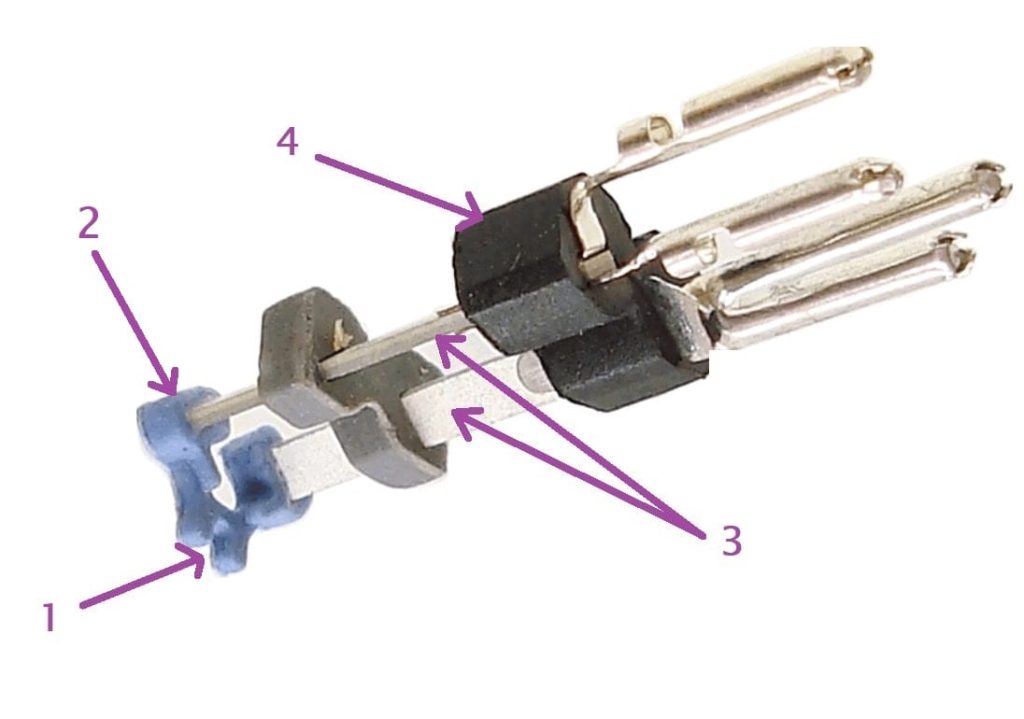
1) Place where the cantilever sits
2) Coupling york
3) Ceramic elements or piezoelectric crystals
4) Mounting block
In this image above, you will see that we have mentioned two components i.e. “Coupling York” and “Ceramic Element or Piezoelectric Crystals”.
These two components are responsible for generating current using the piezoelectric effect.
In simple words, the electricity generated from mechanical stress, pressure, and latent heat is called the piezoelectric effect. You can learn more about the piezoelectric effect here.
In ceramic cartridges, the stylus generates vibrations while running on record grooves, and the coupling york which comes in contact with the cantilever transfers these vibrations to the ceramic element or piezoelectric crystals which flexes them, and a small current is produced.
So, this is how ceramic cartridges work.
Frequently Asked Questions:
Q1- Can any cartridge work for any turntable?
Most of them can work but not all.
Well, there are 2 types of mounts:
- P-Mount
- Standard Half-inch
If your tonearm supports p-mount cartridges then you can’t mount standard half-inch and similarly, if your tonearm supports standard half-inch cartridges then you can’t mount p-mount cartridges.
For a p-mount supported tonearm, any p-mount cartridge will work and for a standard half-inch tonearm, any half-inch cartridge will work.
But, still, there are a lot of other factors that you must consider while replacing the cartridges like stylus type, vertical tracking angle adjustment (VTA), phono preamp gains, and much more.
So, I recommend you to always find a cartridge that is suitable for your turntable. You can ask the manufacturer or find a similar cartridge online in case you need to replace the old one.
Q2- How long does a cartridge last on a turntable?
The cartridge can last a lifetime but a stylus can’t. The average lifespan of a diamond stylus is around 1500-2000 hours and after that, you must replace it to avoid any further damage.
Q3- Should I replace the stylus or cartridge?
It depends on the type of cartridge you are using. If you are using a cartridge that supports stylus replacement then you can replace your stylus and keep using the same cartridge but if your cartridge doesn’t support stylus replacement like most of the MC cartridges then no matter, how good condition is your cartridge in, you need to replace the whole cartridge.
Q4- Is the cartridge more important than the turntable?
Both the cartridge and the turntable go hand in hand. So, a high-end phono cartridge won’t do justice to sound on an entry-level turntable, just as an entry-level cartridge on a high-end turntable.
Many factors play a crucial role in sound quality, like phono preamp gains, amplifiers, speakers, static, etc.
Q5- Can a turntable cartridge be repaired?
Yes, a turntable cartridge can be repaired. From re-tipping the stylus to defects inside the cartridge body, everything is fixable.
Q6- What does a bad turntable cartridge sound like?
You will hear distorted, scratchy, and muddy sounds from the speakers. You will also feel a lack of definition and sound clarity.
Q7- Do more expensive turntables sound better?
Yes, the answer is very obvious. In these high-end and expensive turntables, you will get every component that helps in achieving perfect sound quality, i.e., a good quality cartridge, a better tonearm, metal or acrylic platter, vibration-isolated feet, a good-quality motor, a fully customizable motor, and much more.
Well, we have explained what is a turntable cartridge, how it works, and the types of cartridges in simple words that even a beginner can understand without any problem. If you still have queries then please comment below.

